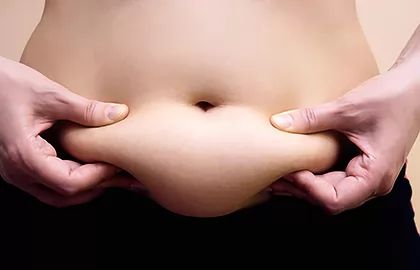Everything you need to know about laser fat removal – lipoplasty / liposuction.
Do you know that there are interesting research was made about fat removal?

Well, in this article we would like to give a few interesting overviews of parameters that have been used for fat removal.
Based on the theory of selective photothermolysis, laser light in the range of far infrared can be used to selectively target fat. Fat can be selectively coagulated or destroyed using lasers in the far infrared spectrum. Anderson et al32 reported that the 1210-nm and 1720-nm laser wavelengths were able to selectively heat adipose tissue; however, no devices associated with these wavelengths are commercially available. In addition, at the time that this article was written, no studies of these devices in the treatment of cellulite have been published. Selective laser irradiation of fat at these wavelengths may be an important breakthrough in the treatment of ‘‘cellulite.’’ O’Dey et al33 showed fatty tissue ablation using a high-powered diode laser (l = 940 nm) using fat cells harvested from the anteromedial thigh in vitro. Their study showed that l = 940 nm achieves an increased absorption of both fatty tissue and water while maintaining a penetration depth of several millimeters. Water in the connective tissue septae might be responsible for some of the side effects, such as carbonization and enhanced collateral damage leading to the vaporization of fat cells. These results are preliminary, yet encouraging.
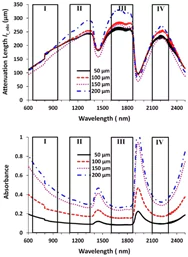
[1]
Freshly excised human skin and subcutaneous fat were irradiated with the pulsed Nd:YAG laser (SmartLipo, DEKA, Italy). A 1,064 nm laser at 40 Hz and 150 mJ and 100 microseconds-long pulses were used.
A 3 cm thick porcine fat sample was irradiated over a 4.3 × 4.7 cm2 area for 2 minutes with a 1,064 nm Nd:YAG laser using 1.2 W/cm2 irradiance.[1]
[2]
STUDY DESIGN/MATERIALS AND METHODS invasively Twenty-four adult subjects were exposed non-invasively on the abdomen to a 1,210 nm laser at fluences of 70, 80, and 90 J/cm(2), with a 10 mm spot size, 5 seconds pre-cooling, and 3 seconds exposure duration delivered with parallel contact cooling.[2]
[3]
Prior to the development of this new 1060-nm diode laser, the initial application of lasers for noninvasive body contouring involved low-level laser therapy (LLLT), also known as cold laser therapy. One device has 5 rotating diode laser heads that work at a wavelength of 635 nm. Treatment sessions last up to 30 minutes, and 6 to 8 sessions are required to obtain optimal results. Low-level laser therapy is a unique modality that is not based on thermal tissue damage, but rather on producing transient microscopic pores in adipocytes that allow lipids to leak out, leading to fat reduction. Because LLLT causes immediate emptying of targeted adipocytes, results are noticeable as soon as treatment is completed. [3]
[4]
This study examined whether 635-nm low-level lasers had an effect on adipose tissue in vivo and the procedural implementation of lipoplasty/ liposuction techniques. The experiment investigated the effect of 635-nm, 10-mW diode laser radiation with exclusive energy dispersing optics. Total energy values of 1.2 J/cm2 , 2.4 J/cm2 , and 3.6 J/cm2 were applied on human adipose tissue taken from lipectomy samples of 12 healthy women. The tissue samples were irradiated for 0, 2, 4, and 6 minutes with and without tumescent solution and were studied using the protocols of transmission electron microscopy and scanning electron microscopy. [4]
[5]
Twelve healthy women who had undergone lipectomy were selected for random fat sampling. Their abdominal fat was analyzed after 0, 2, 4, and 6 minutes of external laser exposure. Follow-up observation was done 24 hours after surgery and continued for up to 12 months after the procedure. The tumescent technique was applied, followed by external laser therapy using a low-level energy diode laser with a nominal wavelength at 635 nm and a maximal power of 10 mW diode. The laser light is line generated at a 60-degree angle with a maximum width of 3 mm. The length of the line generated is factored at an average of 23.7 mm per inch of the generated line for each 25 mm of distance from the patient. The laser light was passed in a sweeping motion about 6 inches above the targeted area. The adipose tissue was externally irradiated through the skin. Cellular effects were studied in samples after 2, 4, and 6 minutes of laser exposure time
Materials and Methods Laser lipolysis of the subcutaneous fat layer in the thigh was performed on a fresh female cadaver less than 8 hours postmortem. A pulsed 1064-nm Nd:YAG (Smart-Lipo; Deka, Florence, Italy) was evaluated on the left thigh with the following parameters: 100 µ pulse, 150 mJ per pulse, 40 Hz (peak power: 1.5 KW, average power: 6 W). These parameters are those usually reported in the literature. A 980-nm diode laser (Pharaon, Osyris, Hellemmes, France) was evaluated on the right thigh with the following parameters: continuous emission; for 3 different power settings: 6 W, 10 W, and 15 W. The association of these two lasers with an He:Ne source allows precise visualization of the region where the energy acted, because of transcutaneous illumination. These 2 lasers were coupled to a 600-µm optical fiber inserted in a 1-mm diameter cannula. The cannula was inserted into the subcutaneous fat layer of the thigh approximately 1 cm below the skin. The laser was applied to the tissue at several locations with a total duration of exposure varying from 1 to 3 seconds. [5]
[6]
The device prototype used was composed of four plates with 16 infrared laser emitters (per plate) totalizing 64 emitters and two electronic control box. The characteristics of phototherapy equipment are irradiation type Ga-Al-As semiconductor diode laser, with wavelength of 808 nm operating in a continuous wave mode. The irradiation information per emitter was composed by spot diameter (elliptical shape) of horizontal 0.3692/ vertical 0.0582 cm, spot area of 0.0169 cm2 , output power of 100 mW and irradiance of 6.0 W/cm2 . The energy delivered per session, per point, was 96 J. The emitters were arranged perpendicularly to the skin and were allocated in the anterior region: abdominal and quadriceps simultaneously during 8 min. After this, change the position to irradiate the posterior region: gluteus and biceps femoral during 8 min, totalizing 16 min of its application (6144 J/all sessions (48) 294,912 J). Number of points irradiated were 64 (per position)/128 (total) [6]
[7]
Low Level Laser Therapy
The overall dosage for LLLT is based on a combination of wavelength, energy level, and time. Karu et al24 determined that cytochrome c oxidase, the primary phototarget for LLLT, has a peak absorption of 632.8 nm, and therefore delivery of that wavelength is necessary for photobiomodulation. Furthermore, power density and exposure time results show that laser power 2.9 mW could enhance cell proliferation, whereas higher power has no effect. Stimulation is most pronounced at irradiation times between 0.5 and 6 minutes, based on the Arndt-Schultz biological law in which weak stimuli excite physiological activity, moderately strong stimuli empower it, strong stimuli retard it, and very strong stimuli inhibit activity. [7]
[8]
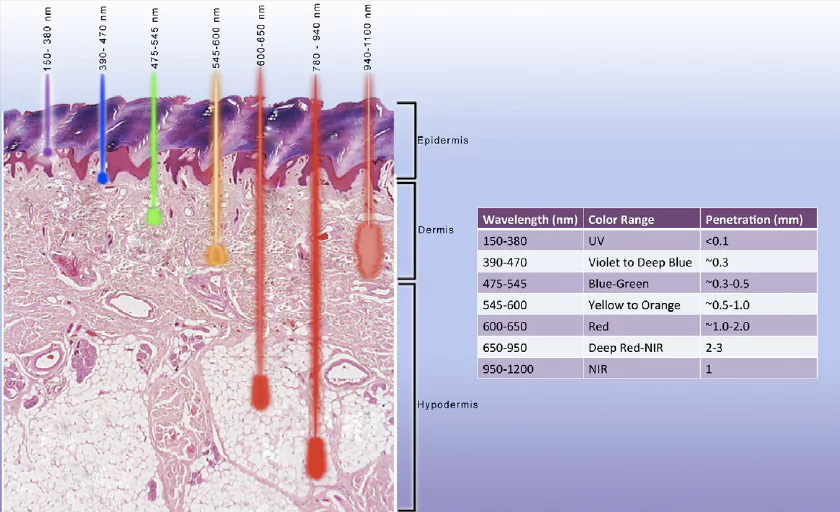
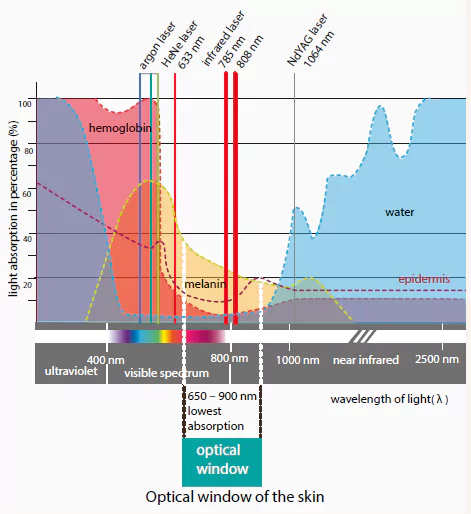
Different wavelength penetration into the skin.
What wavelength can reach a fat the most efficiently?

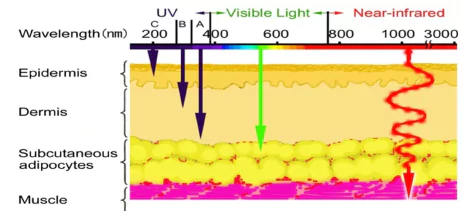

According to a research study, Endurance lasers plans to make the experiment with the following parameters
Laser wavelength: 808 nm
Method of exposure: superficial, non-invasive.
Surface area to be exposed to 1 sq cm
The intensity of laser radiation per 1 square cm ~ 1-1.5 W (1-1.5 J)
The average energy gap is 0.1-0.15 W per 1/10 sq.
Operating Mode – Continuous
The affected area is the stomach.
Processing time 1 sq. Cm: 45-60 sec.
Received energy on the surface 30-45 J
The resulting energy of adipose tissue with an area of 1 sq. Cm. ~ 15-20J.
Processing area 15 * 5 sq cm = 75 sq cm.
The total processing time of the entire surface is 55-60 minutes.
The expected efficiency of the procedure: 2-3% of the impact on all adipose tissue.
The expected temperature on the skin surface 55-65 degrees Celsius
Estimated fat cell temperature 40-45 degrees Celsius
Skin surface cooling: air blowing.
Alternative method
Laser wavelength 1064 nm Nd: YAG
Method of exposure: superficial, non-invasive.
The surface area on which exposure will be 0.5 sq cm
Intensity of laser radiation at 0.75 sq cm ~ 0.5-0.75 W (0.5-0.75 J)
The average energy gap of 0.05-0.075 watts per 0.1 square.
Operating mode – pulse
Pulse parameters: 27-30 kHz, pulse duration 8-10 ns
The affected area is the stomach.
Processing time 1 sq cm: 30-45 sec.
Received energy on the surface 30-45 J
The resulting energy of adipose tissue with an area of 1 sq. Cm. ~ 10-15J.
Processing area 15 * 5 sq cm = 75 sq cm.
The total processing time of the entire surface is 30-45 minutes.
The expected efficiency of the procedure: 3-5% of the impact on all adipose tissue.
The expected temperature on the skin surface is 50-65 degrees Celsius
Estimated fat cell temperature 40-45 degrees Celsius
Skin surface cooling: air blowing.
The first launch of an Endurance laser fat removal machine
[1] Comparative Study of Wavelengths for Laser Lipolysis https://www.researchgate.net/publication/26869935_Comparative_Study_of_Wavelengths_for_Laser_Lipolysis
[2] Effects of non-invasive, 1,210 nm laser exposure on adipose tissue: results of a human pilot study.
- Molly Wanner, Mathew M. Avram, +6 authors Dieter Manstein
[3] «Update on Noninvasive Body Contouring Techniques Alexandra K. Rzepecki, BA; Aaron S. Farberg, MD; Peter W. Hashim, MD; Gary Goldenberg, MD
[4] http://buckscountylaserlikelipo.com/pdf/Z_fat_liquefaction_LLLT_neira_full%20article.pdf
Fat Liquefaction: Effect of Low-Level Laser Energy on Adipose Tissue Rodrigo Neira, M.D., José Arroyave, B.S.C.E., T.E.M., S.E.M., Hugo Ramirez, M.V., Clara Lucía Ortiz, M.D., Efrain Solarte, Dr. rer. nat., Federico Sequeda, Ph.D., and Maria Isabel Gutierrez, M.D., M.Sc., Ph.D.
[5] Histologic Evaluation of Laser Lipolysis: Pulsed 1064-nm Nd:YAG Laser Versus CW 980-nm Diode Laser Serge Mordon, PhD; Anne Françoise Eymard-Maurin, MD; Benjamin Wassmer, MSc; and Jean Ringot, PhD Dr. Mordon is from INSERM, Lille University Hospital, Lille, France; Dr. Eymard-Maurin is from the Anatomopathology and Cytology Center, Toulon, France; Mr. Wassmer and Dr. Ringot are from Osyris SA, Hellemmes, France.
[6] The effects of exercise training associated with low-level laser therapy on biomarkers of adipose tissue transdifferentiation in obese women Raquel Munhoz da Silveira Campos1 & Ana Raimunda Dâmaso2 & Deborah Cristina Landi Masquio3 & Fernanda Oliveira Duarte4 & Marcela Sene-Fiorese 5 & Antonio Eduardo Aquino Jr5 & Filippo Aragão Savioli6 & Pamela Cristina Lopes Quintiliano7 & Ana Claudia Pelissari Kravchychyn2 & Liliane Isabel Guimarães6 & Lian Tock8 & Lila Missae Oyama2,9 & Valter Tadeu Boldarine 9 & Vanderlei Salvador Bagnato5,10 & Nivaldo Antonio Parizotto1,10
https://www.academia.edu/36651593/The_effects_of_exercise_training_associated_with_low-level_laser_therapy_on_biomarkers_of_adipose_tissue_transdifferentiation_in_obese_women
[7] Body Contouring Using 635-nm Low Level Laser Therapy
Mark S. Nestor, MD, PhD,*,† Jessica Newburger, DO,†,‡ and Matthew B. Zarraga, DO
[8] Low-Level Laser Therapy and Vibration Therapy for the Treatment of Localized Adiposity and Fibrous Cellulite
https://pdfs.semanticscholar.org/7136/cabc702d227e2ecc5d7b7ae33ade48273993.pdf?_ga=2.126802884.893499098.1578337636-1127619971.1575757176
#fat #fatremoval #lipo #liposaction #reducefat #reduceweight #lasertherapy
